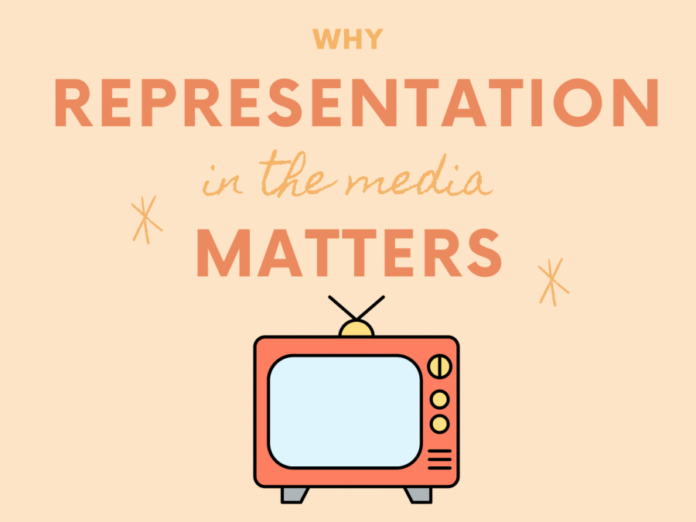In contemporary society, the narratives curated for television and film wield immense power, surpassing mere entertainment to embody a substantial impact on cultural perception, identity formation, and social behavior. The proclamations conveyed through these narratives shape public attitudes towards various issues, thereby signifying that the portrayal of characters is far more consequential than the medium through which they are delivered.
The gravity of these portrayals manifests in the lived experiences of individuals, particularly those belonging to marginalized groups. Accurately reflecting diverse identities is not merely aural; it is fundamentally a matter of life and death. A profound understanding of how media representation informs societal expectations and contributes to broader discourses surrounding identity reveals a crucial intersection of art and reality.
The Stranglehold of Stereotypes
Media representations oftentimes perpetuate stereotypes that can shape societal narratives, influencing how individuals perceive themselves and each other. Stereotypical characters, especially regarding race, gender, and sexual orientation, lead to the formation of constricted and often damaging societal expectations. Such caricatures do not merely exist within the realm of fiction; they extend into the quotidian lives of those portrayed.
For instance, the representation of individuals from racial and ethnic minorities is fraught with historical stereotypes. This has far-reaching implications, not only propelling societal biases but also impacting the self-esteem of those who identify with these groups. The notion that one must conform to a stereotype can create internalized oppression, further relegating these identities to one-dimensional portrayals within a multifaceted society. The absence of complexity in representation can result in an echo chamber of ignorance, perpetuating a vicious cycle of misunderstanding and systemic bias.
The media’s influence extends to more vulnerable populations; marginalized groups often grapple with portrayals that lack authenticity. Take the representation of LGBTQIA+ individuals, historically relegated to roles devoid of agency or individuality. Portrayals that lean towards sensationalism rather than authenticity contribute to a societal narrative that can vilify or dehumanize LGBTQIA+ lives. The ramifications are dire, often culminating in mental health challenges or increased rates of violence against these communities.
Within this context, one can argue that the stakes of representation are not merely philosophical but anchored in reality. The absence of nuanced characters can hinder the development of empathy among audiences, limiting their ability to understand and appreciate the complexities of different lives. The societal expectation that individuals should behave in a manner synonymous with onscreen portrayals can shape not only personal identity crises but can also exacerbate vulnerabilities, potentially leading to drastic outcomes for marginalized individuals.
The Dissonance between Media and Reality
Beyond the restrictive nature of stereotypes, discrepancies emerge between how media portrays certain characters and the realities they navigate. This dissonance complicates the audience’s understanding of social justice issues, often reinforcing problematic assumptions. For example, the typical portrayal of mental health within popular television series can oscillate between glamorization and trivialization, leading to a societal expectation that undermines the seriousness of these conditions.
When mental health is misrepresented—portrayed as solely a source of comic relief or as a path to villainy—this results in a skewed perception of individuals living with mental illnesses. As a consequence, broader social stigma persists, rendering discussions surrounding mental health fraught with challenges. The expectation that individuals either overcome their struggles heroically or succumb to them pathologically reinforces the binary view that hinders collective understanding of these complex issues.
Furthermore, portrayals of issues such as poverty or addiction often tiptoe around the systemic factors that contribute to these conditions. The narrative that frames characters solely as products of their circumstances minimizes the socio-economic realities that contribute to these challenges, leading to a lack of empathy from the viewing public. When society is subjected to predominantly simplistic narratives, it fosters a culture of blame, with individuals not recognizing the multitude of factors impacting others’ lives.
The Consequences of Authentic Representation
Conversely, the portrayal of characters with authenticity can serve as a potent catalyst for societal change. When artists and producers take the initiative to depict individuals from various backgrounds—imbuing them with depth and nuance—they illuminate the realities of life that demand attention. Attention to detail in representation fosters a greater sense of understanding and empathy, creating a ripple effect throughout society.
When shows prioritize authentic voices and stories, the resulting discourse allows audiences to engage in deeper conversations. For instance, programs that spotlight the experiences of trans individuals have the power to reshape public attitudes, contributing to the desensitization of prejudice and fostering a more inclusive society. These portrayals can engender a sense of solidarity among viewers who previously might have lacked exposure to these narratives.
Additionally, the presence of positive role models within the media can lead to healthier societal expectations. When audiences see characters overcoming adversity or thriving in their uniqueness, it signals to individuals grappling with their identities that they too can navigate their realities, thereby contributing to the mental well-being of these groups. These portrayals challenge stereotypes by offering alternatives to commonly held beliefs, thus fostering a more equitable society.
The Media’s Responsibility
It is imperative for media creators to recognize their responsibilities as conduits for change. By engaging with consultants and individuals from diverse backgrounds, artists can enrich their narratives, painting a fuller picture of societal realities. The absence of such engagement leads to a misrepresentation that can perpetuate harm, compelling the need for ongoing dialogue surrounding issues of representation.
The imperative for responsible storytelling cannot be overstated. The synergy between authentic representation and cultural sensitivity can play a pivotal role in shaping expectations for characters in media—expectations that reflect the nuanced existence of individuals in real life. This appreciation for authenticity in representation aligns with broader societal efforts to dismantle systemic injustices that continue to plague our communities.
Conclusion: The Terrifying Reality of Representation
In summation, the notion that media portrayals are merely whimsical constructions is a dangerous fallacy. They are intricate reflections of our societal fabric, capable of affecting lives profoundly. The stakes are high; the narratives crafted through the lens of media wield the potential to educate, heal, and empower or, conversely, to harm, misinform, and perpetuate systemic injustices.
The call for responsible representation is more than an academic exercise; it is a necessity for the cultivation of a just and empathetic society. Understanding that portrayals in media are a matter of life and death challenges creators and audiences alike to re-examine their engagement with the stories brought to life onscreen, shaping a future where these narratives foster understanding, compassion, and equity among all individuals.





























